Insta360 X4 review: the best 360-degree camera just got better
Insta360 X4: two-minute review
The best handheld 360-degree camera just got better with the latest iteration, the Insta360 X4. It builds on the X3, most notably bumping up the video resolution from 5.7K to 8K – and when we're talking about such a wide field of view from twin ultra-wide lenses, resolution matters.
8K video up to 30fps trickles down improved capabilities at lower resolutions, too, with 5.7K video up to 60fps and 4K video up to 100fps. The single-lens mode also gets a bump in frame rate, with 4K up to 60fps.
Sensor: Dual 72MP 1/2-inch sensors
Video: 8K 360-degree, 5.7K up to 60fps, 4K up to 100fps, single lens up to 4K 60fps
LCD: 2.29-inch touchscreen
Video modes: Active HDR, Timelapse, Timeshift, Bullet time
Connectivity: Wi-Fi, Bluetooth 5.0, USB-C
Memory card: MicroSD UHS-I
Size: 46 x 123.6 x 37.6mm
Weight: 203g
Battery: 2,290mAh
Video can be shot in a standard mode with choice of standard, vivid and flat color profiles, plus there's a HDR video option for increasing perceivable detail in bright highlights and dark shadows – something the X4's small 1/2-inch and high-resolution sensor otherwise struggles with.
With its improved capabilities, the X4 feels like a more versatile pocket camera. Like the X3 it offers neat video modes you don't get on the best camera phones, like a 360-degree field of view that enables a shoot-first reframe later way of shooting, and creative effects such as ‘bullet time’ and hyperlapse, but it now also feels like a highly capable action camera, vlogging tool, and – particularly for motorcyclists – dash cam.

Video modes are supported by superb image stabilization that smooths out the shakes in your action footage, plus 360-degree horizon lock, which levels your edited footage when the camera rolls with the action.
Insta360's clever ‘invisible’ selfie stick allows you to film everything around you from a third-person view, whether it's mounted to bike handlebars or in the hand, while the extra-long selfie stick can give you a drone-like perspective. This is also a fully waterproof camera up to 33ft / 10m, so most experiences are covered.
We still get the lovely 2.29-inch touchscreen and simple interface, while a beefier battery has been squeezed into a body that’s roughly the same size as before, albeit around 10% heavier, and gives a huge bump in battery life.
The most capable rivals, such as the GoPro Max, Kandao Qoocam 8K, and Ricoh Theta X, are either dated or pricier – or both – and until they’re replaced, the X4 is 2024's unrivaled 360-degree camera, and could be the one extra pocket camera in addition to your smartphone that you choose for getaways, gatherings, and events. It handles superbly, and captures the kind of video footage you simply can't yet shoot with a phone.
Insta360 X4: price and availability
- Launched worldwide in April 2024
- Costs $499/ £499 / AU$879
The Insta360 X4 is available worldwide now following its April 16 announcement, and costs $499.99 / £499.99 / AU$879.99 – that's roughly a 10% markup from 2022's X3. Given inflation and the new camera’s improved capabilities, that price increase seems fair, although the X3 has fallen in price since its release, and will likely drop in price further following the X4’s launch, and is a compelling cost-effective alternative.
There are a host of optional accessories in the Insta360 ecosystem, including various selfie sticks (one of which is designed to enable you to capture ‘bullet time’ effects), mounts, and an underwater housing. In the box you get the X4's new detachable lens protectors (replacement protectors are available separately), while you'll need a microSD memory card to store photos and videos. At the time of writing it's unclear if the X4 will be available in different kits – visit the Insta360 store to see all the accessories on offer.
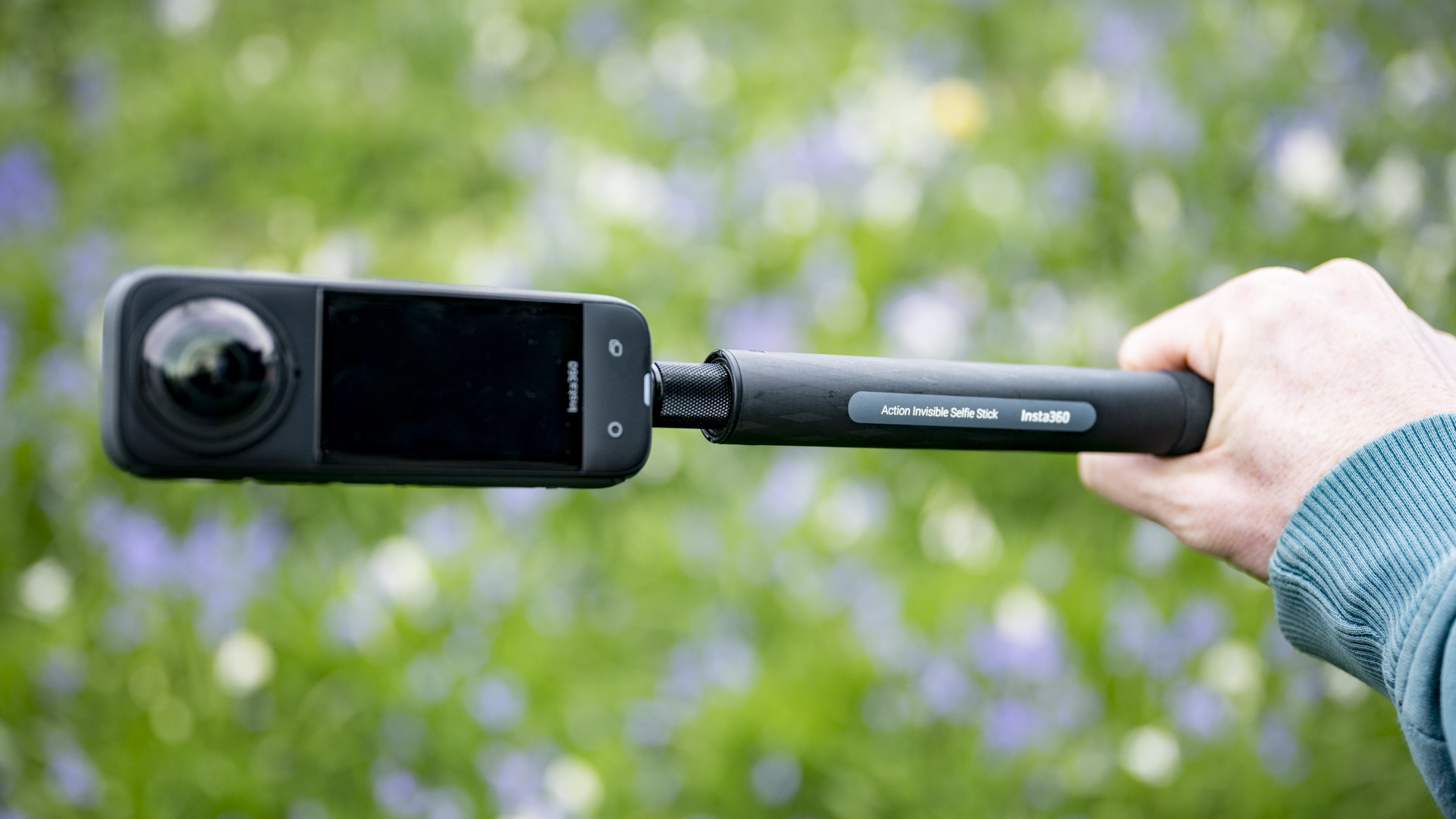
Insta360 X4: design
- Slightly bigger and heavier than the X3
- Similar X3 design includes large touchscreen and 1/4-inch threaded port for a selfie stick
- Waterproof up to 10M
- New screw-on lens guards
The stick-like design of the Insta360 X4 is very similar to the X3, and that's a good thing, because the X3 is one of the most user-friendly 360-degree cameras available. Its grippy exterior is easy to hold, or you can attach one of Insta360's invisible selfie sticks using the threaded mount point on the bottom.
Twin bulbous ultra-wide lenses cover the entire 360-degree field of view – these are the part of the X4 that really needs protecting, and to that end the camera comes with ultra-light clear lens protectors that can be screwed on and off, whereas the X3 uses non-reusable sticky lens guards.
Build quality is superb: the camera is fully waterproof up to 33ft / 10m, with all ports rubber sealed (though I haven’t had the opportunity to test the waterproofing out properly, yet). You’ll know if the seals aren't fully locked, thereby compromising waterproofing, as the orange coloring inside the catch will be visible – a neat bit of design.
You get a USB-C port for connecting and charging the camera, plus a hefty 2,290mAh battery that can record for up to 135 minutes – that's a huge increase from the 81 minutes provided by the X3's 1,800mAh battery.
The X4 records onto microSD memory cards, and naturally, because of the waterproof design, the card slot is inside the camera's battery compartment rather than directly accessible outside, as is the case on the less-robust and action-averse DJI Osmo Pocket 3.
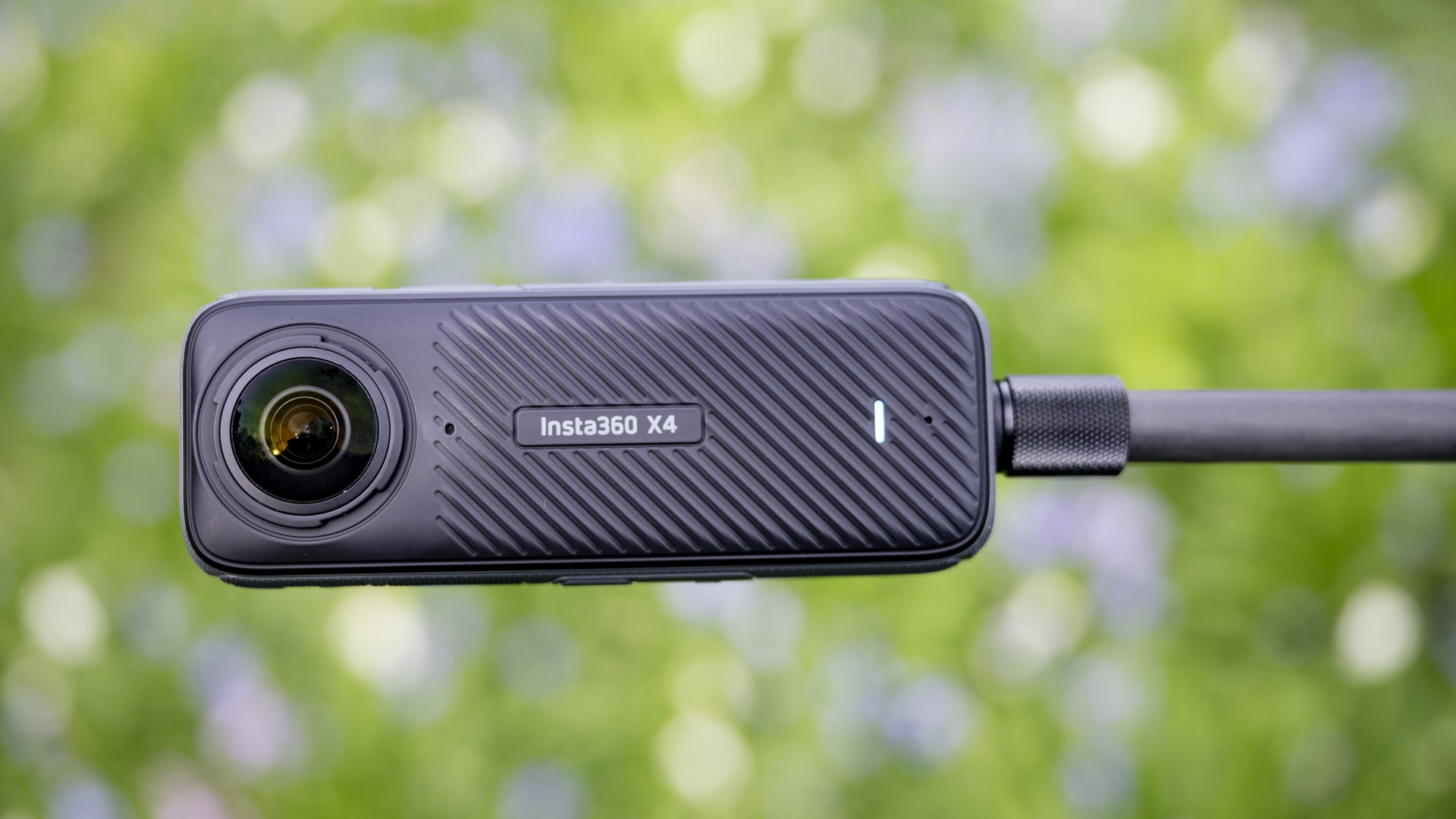

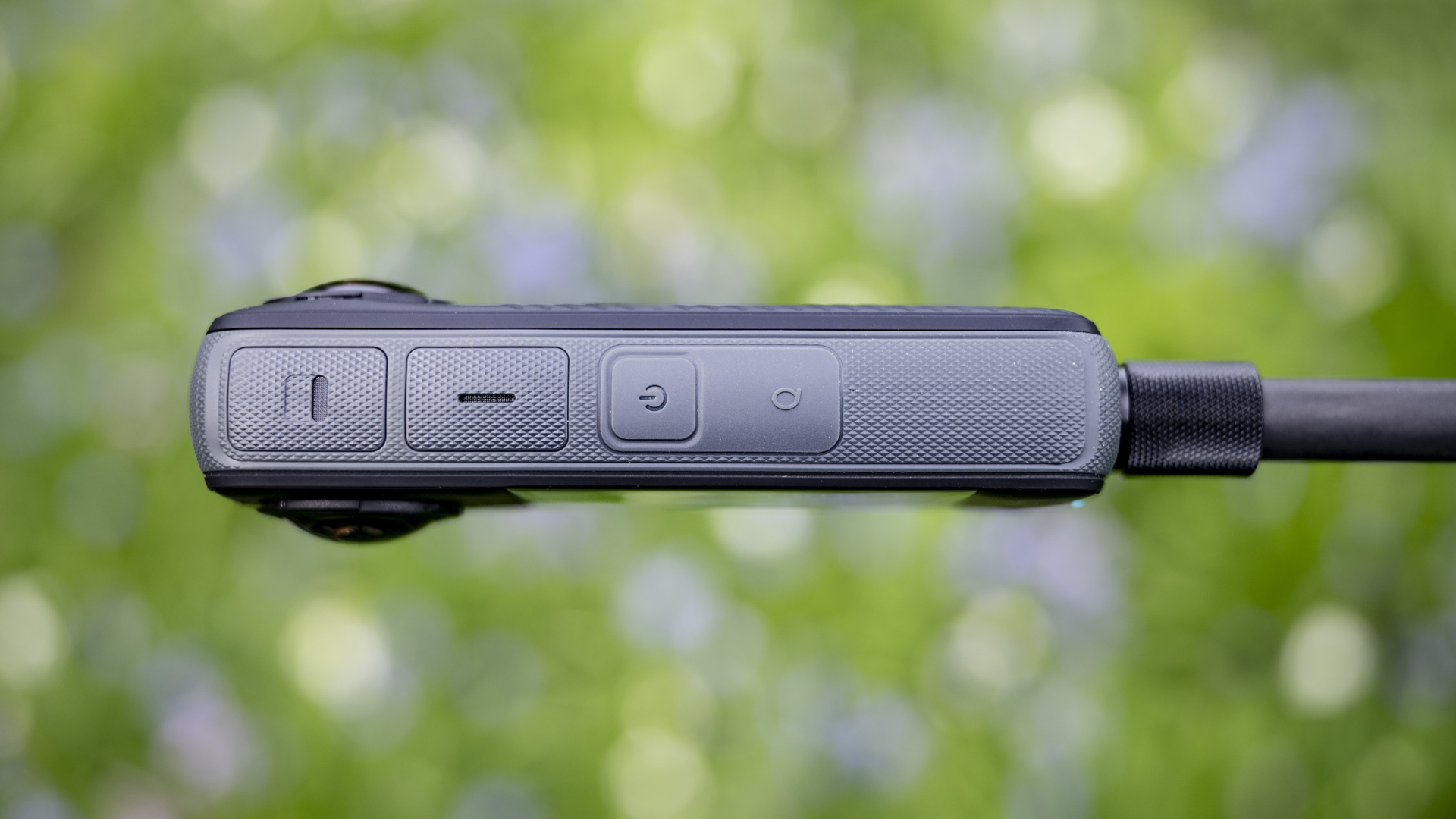



There's a slight increase in size from the X3, though it’s barely noticeable, plus a 10% increase in weight – the X4 weighs in at 7.16oz / 203g, and feels reassuringly solid for its diminutive size.
There are four direct physical controls around the camera: robust power and quick menu buttons on the side, plus shooting mode and record buttons under the generous 2.29-inch touchscreen. Most of the action happens through the responsive touchscreen.
By default the customizable options displayed on screen for quick access include the shooting mode and resolution settings, the lens, plus the lens perspective. At a push you can switch between viewing 360-degree footage from the front or rear lens (in the single-lens mode, this option selects the lens you're recording with).
The user interface is simple and quick to navigate, though a little keen to go idle – I've needed to reopen the menu many times to confirm video mode selections.
Physical controls are hard to access when the camera is out of reach on a selfie stick, and that's where voice and gesture controls come in. You can command the X4 to start and stop video recording – which proved super-handy when I had it mounted three meters above my head on the extra-large selfie stick, while a peace sign gesture will trigger the timer for taking photos. The mixture of audible and visual commands covers you in most scenarios, including underwater.
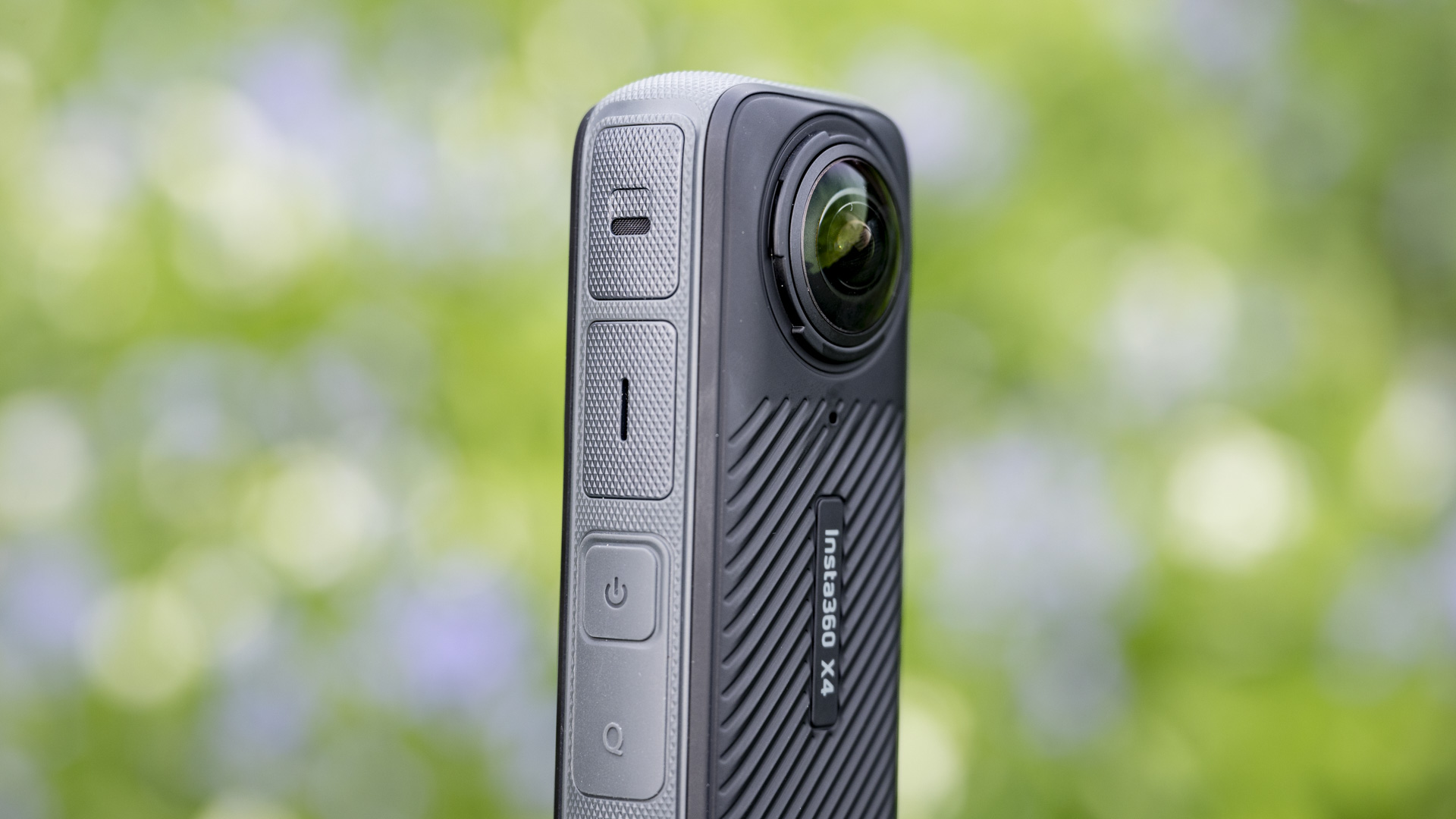

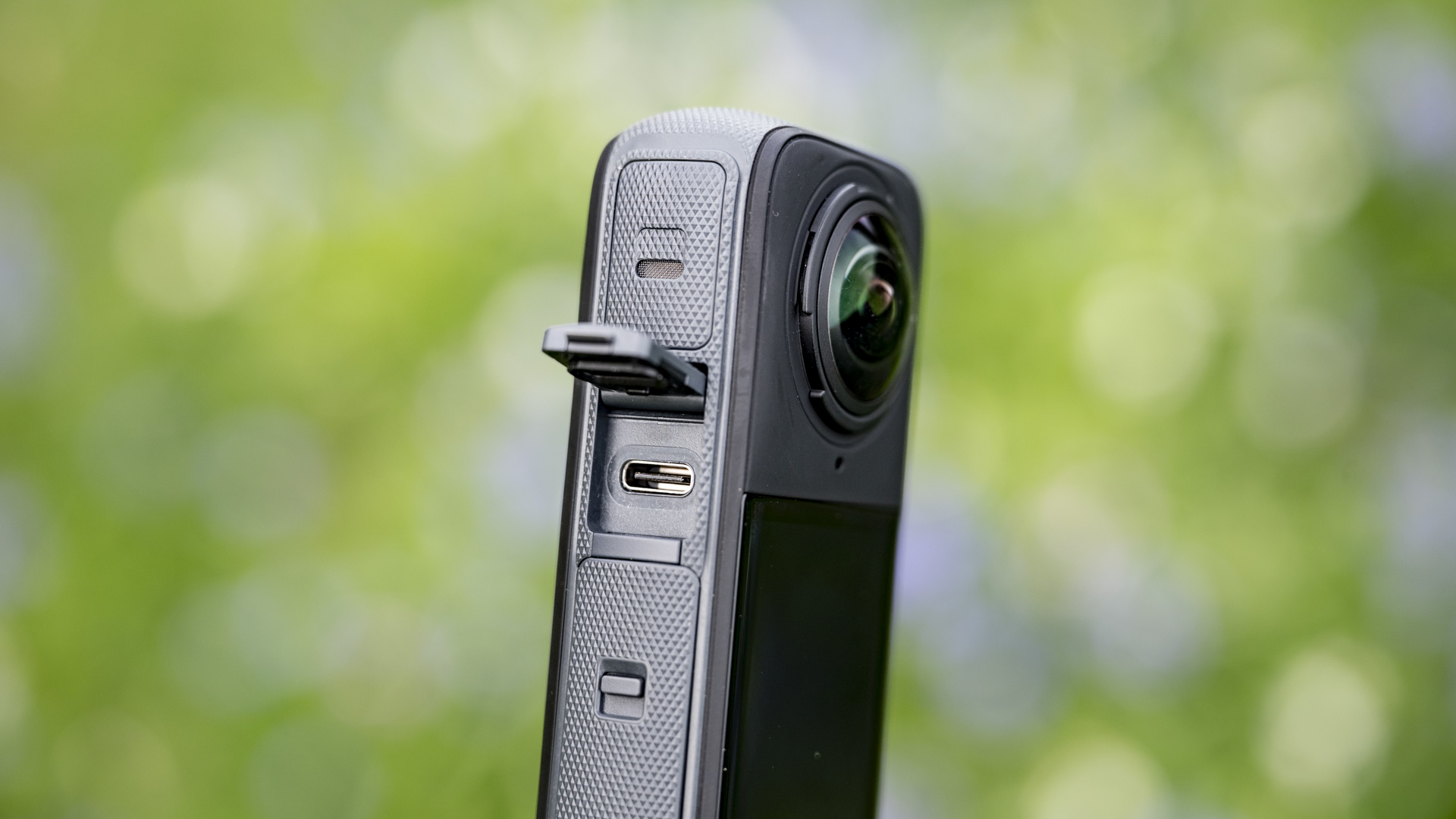
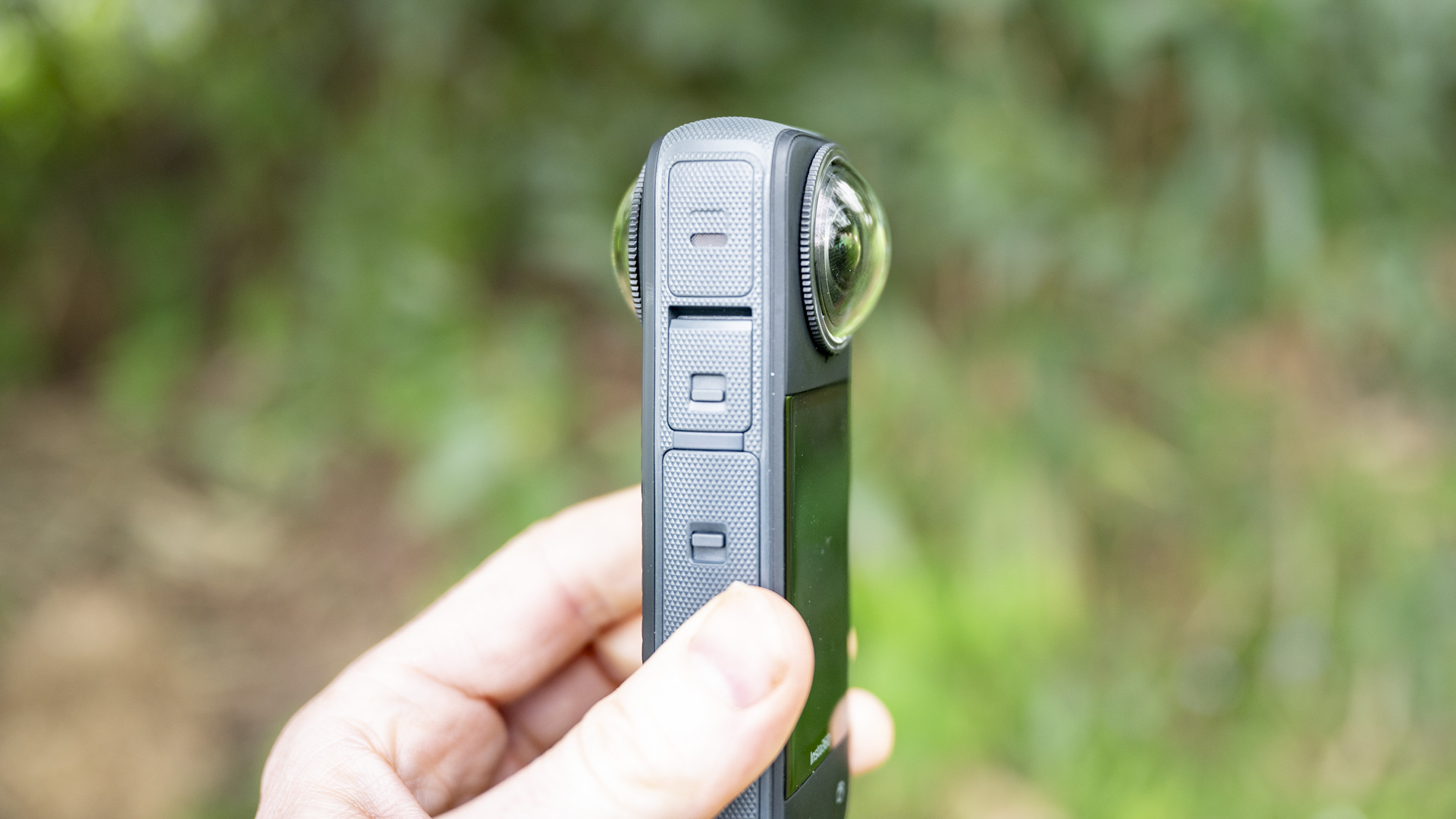
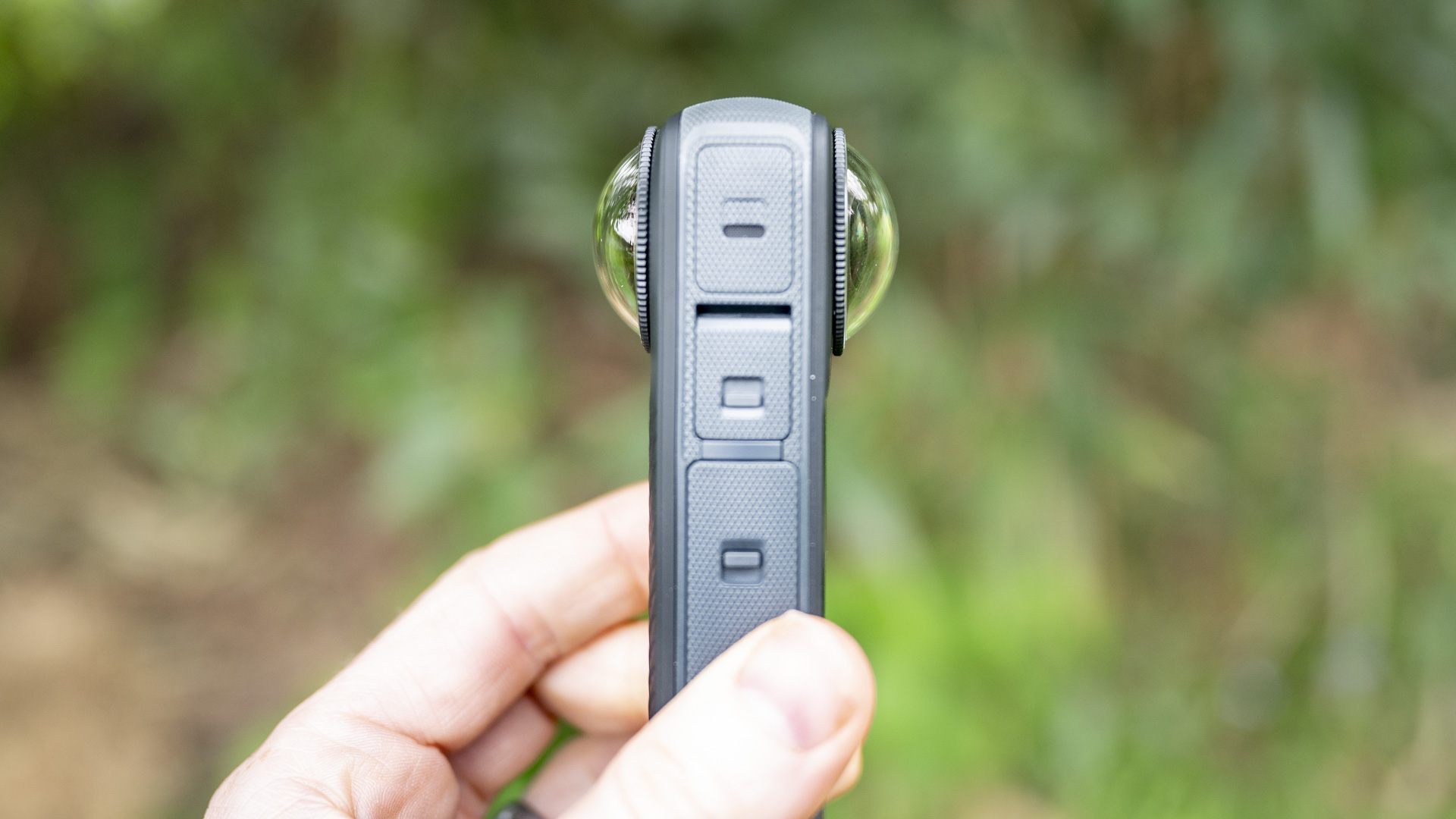

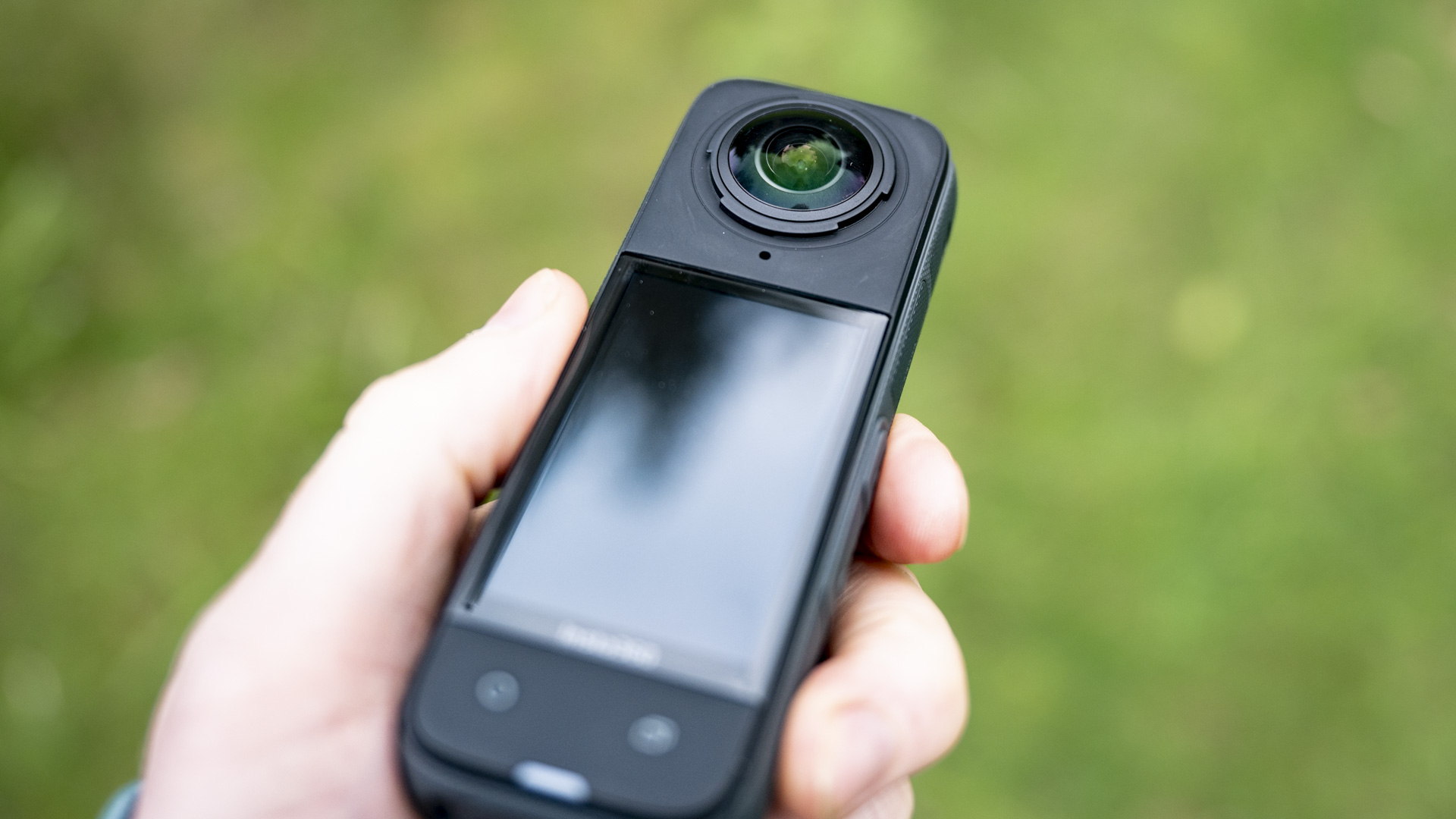

There's more to dig into by swiping the touchscreen. Flicking from right to left reveals exposure settings including color profile, while swiping left to right opens up your photo and video gallery for playback, and during playback you can swipe the screen to move around the 360-degree perspective.
Swiping down from the top of the screen opens up the main menu, through which you can activate and deactivate a number of controls such as gesture and voice commands, and connect to compatible Bluetooth-equipped devices such as headphones and remotes. You can also adjust the screen brightness here.
Explanatory on-screen text appears for most of the operational controls and shooting modes, which is super-handy when you’re getting started, especially for getting the most out of the shooting modes.
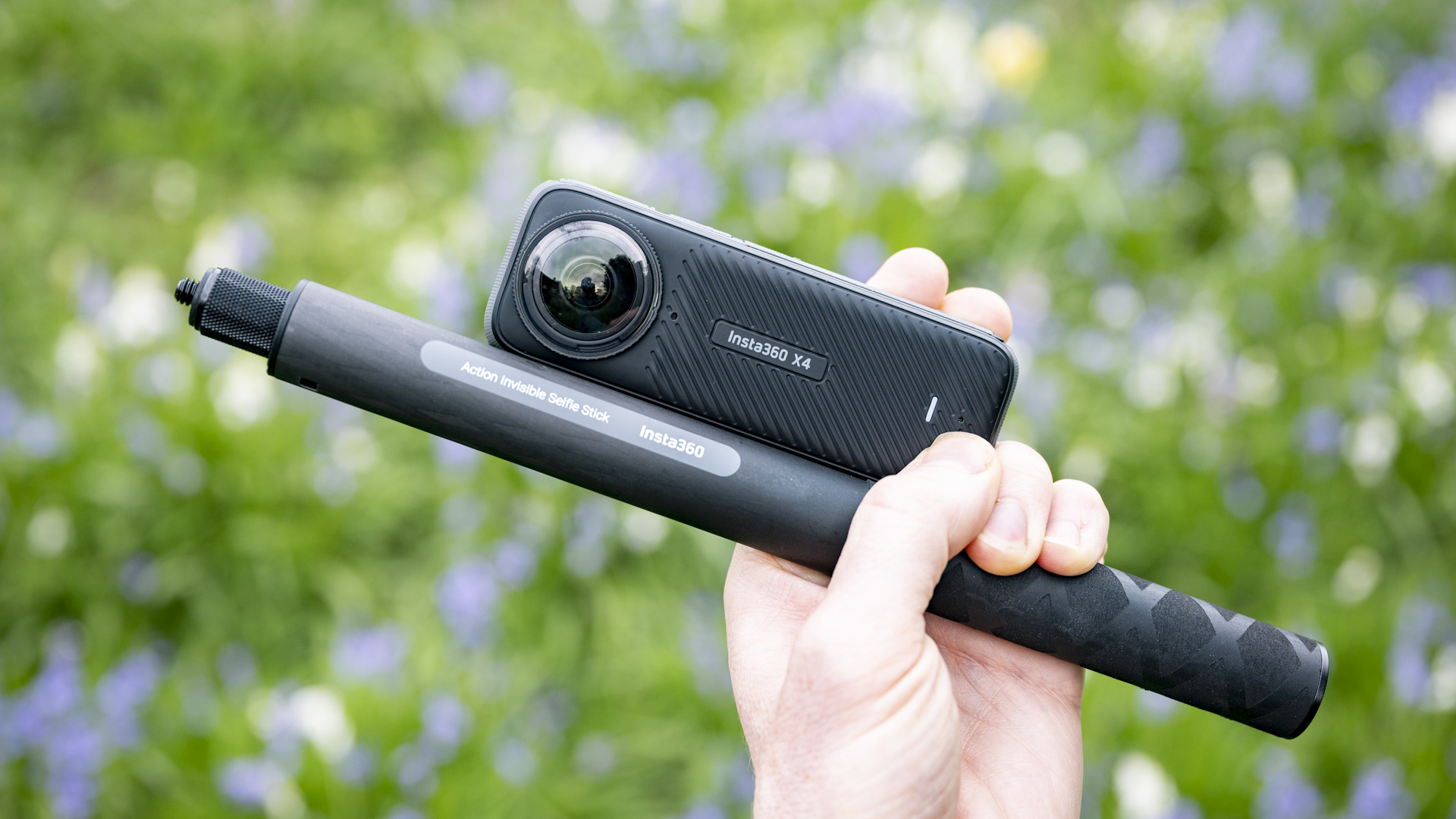

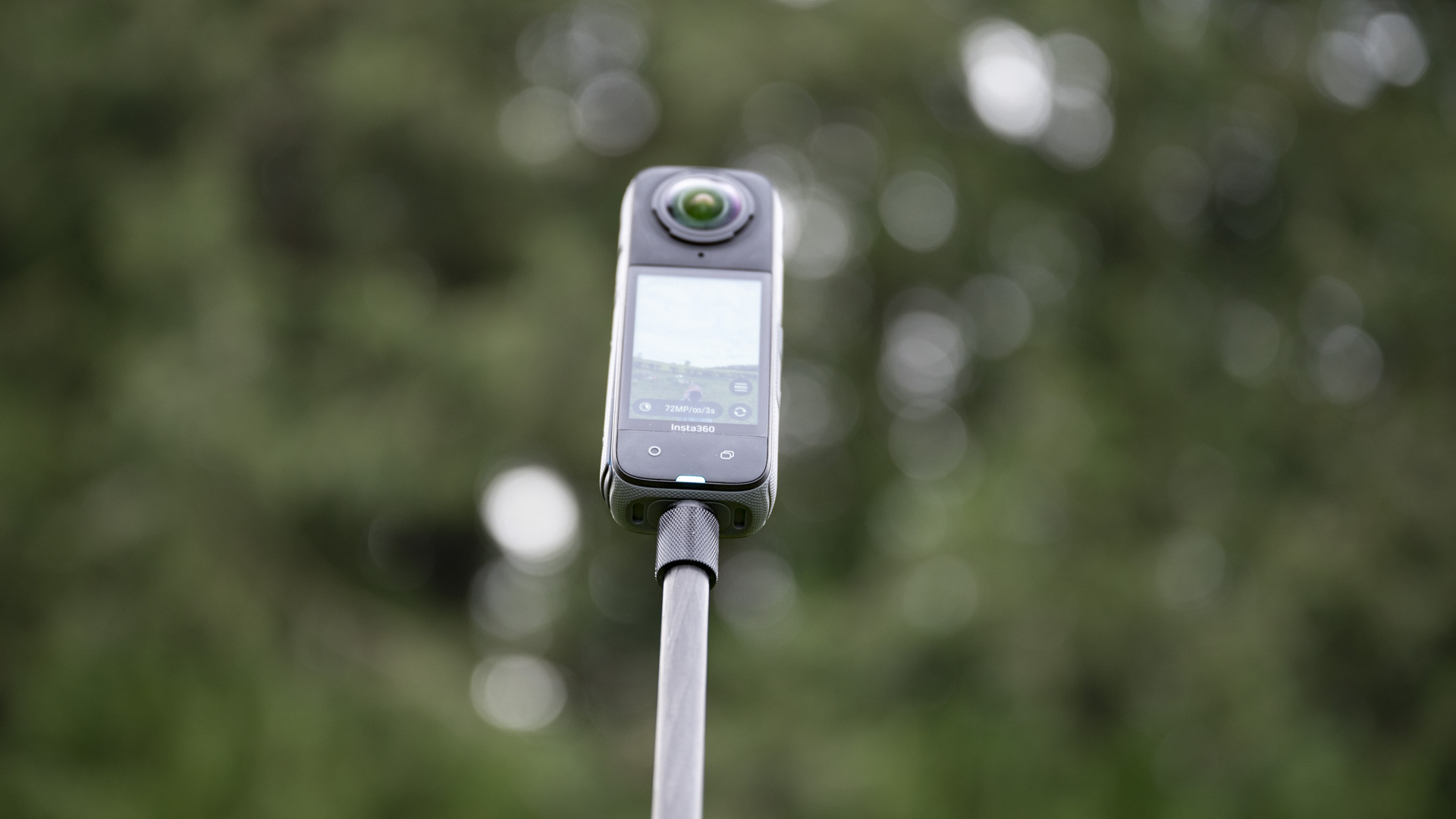
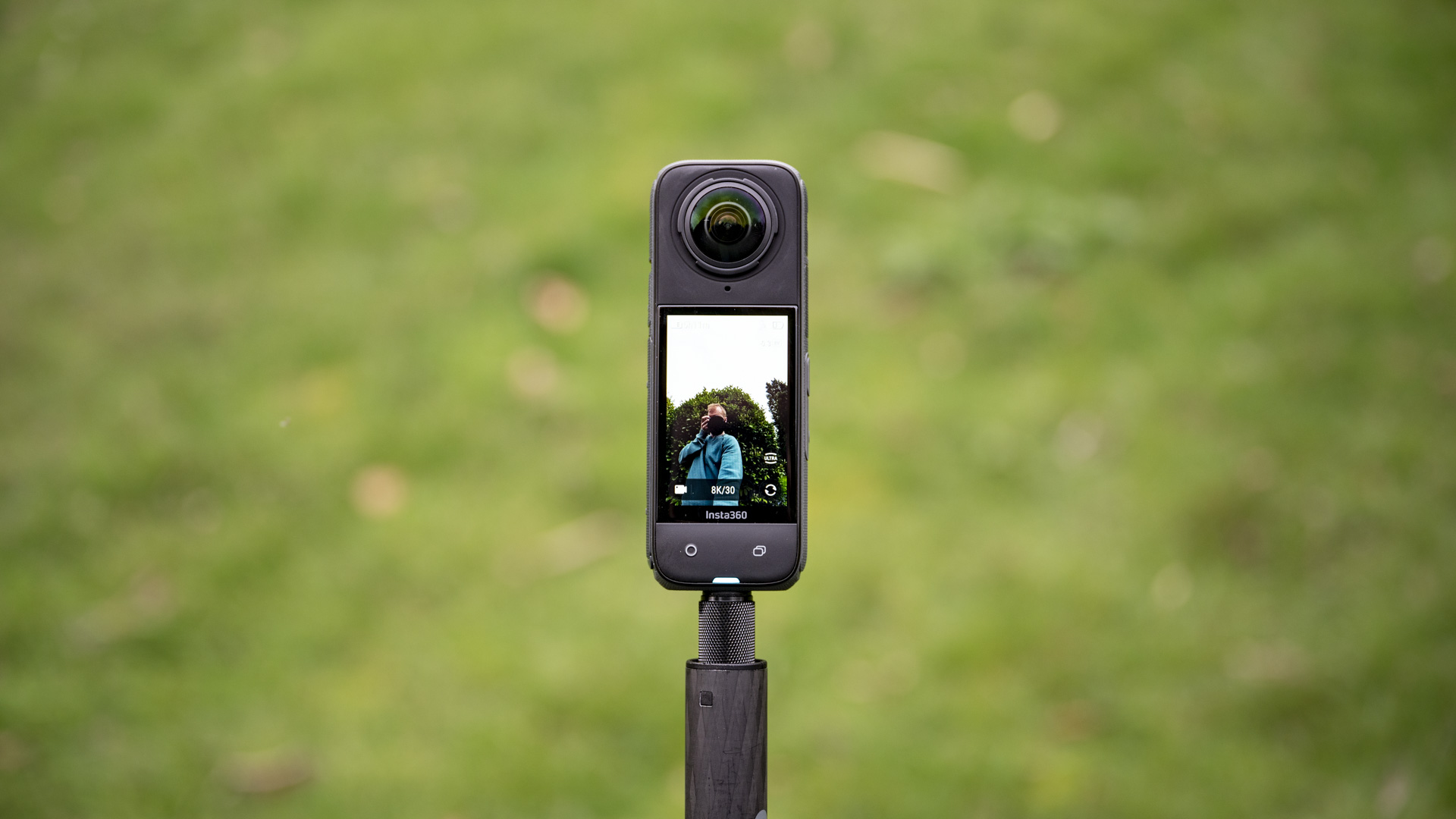


The X4 is designed to be used in vertical orientation, and as such your handling and viewing experience is largely in the 9:16 ratio. You can record in horizontal format using the single-lens mode, and there’s also a multi-aspect FreeMe mode where you can choose the aspect ratio, but overall the user experience is geared to content creators and mobile users familiar with the vertical format.
During recording, the X4 can get warm quickly, especially in the power-hungry high-resolution video modes. If you're using the X4 for shooting action, your movement will go some way to cooling the camera down, but if you're recording while largely stationary or in particularly warm environments, things can get moderately warm.
Overall, the X4 handles superbly for users of all experience levels and abilities.
Insta360 X4: features and performance
- Huge 135-minutes of recording time
- Especially capable image stabilization
- Intuitive mobile editor
- Decent range of shooting modes
Startup is a little sluggish, but once the display has woken up
The Insta360 X3 uses an 1800maH battery, notably higher capacity than the 1600mAh of the GoPro Max. Insta360 claims this can last 81 minutes in the 360-degree, 5.7K resolution mode.
After 15 minutes the Insta360 X3 dropped from 100% to 87%, suggesting it could actually last a lot longer than 81 minutes. However, following 45 minutes of capture it was at 49% battery, closer to the claim.
What we have here is somewhat non-linear battery reporting. The Insta360 X3 holds onto a 100% charge reading for a little too long, a popular tactic in consumer electronics. It’s not helpful in a more tool-like gadget such as this, but may change over the weeks as the battery settles (and more firmware updates arrive). And the important part: Insta360’s 81 minute battery life rating is not a work of fiction.
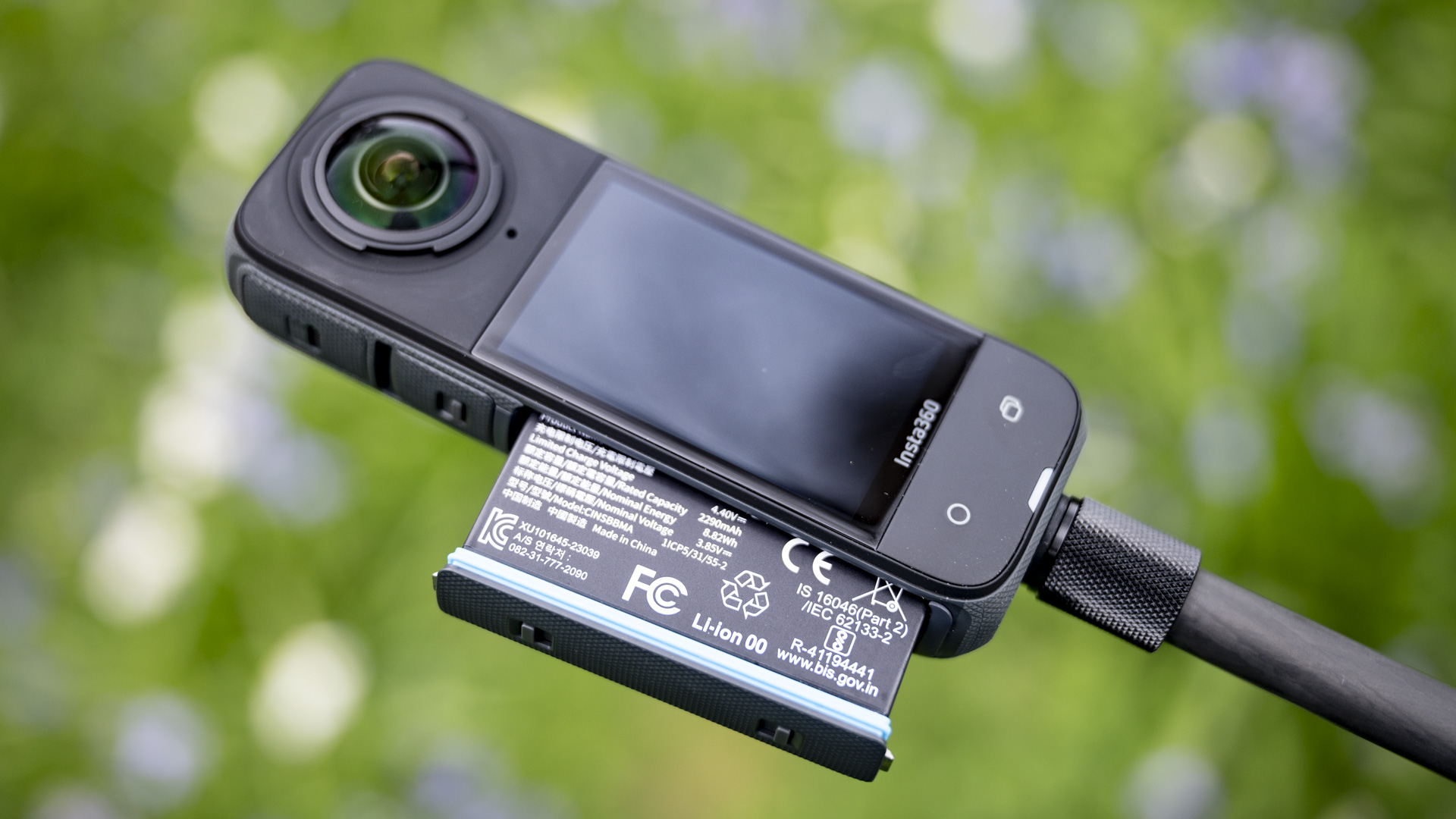
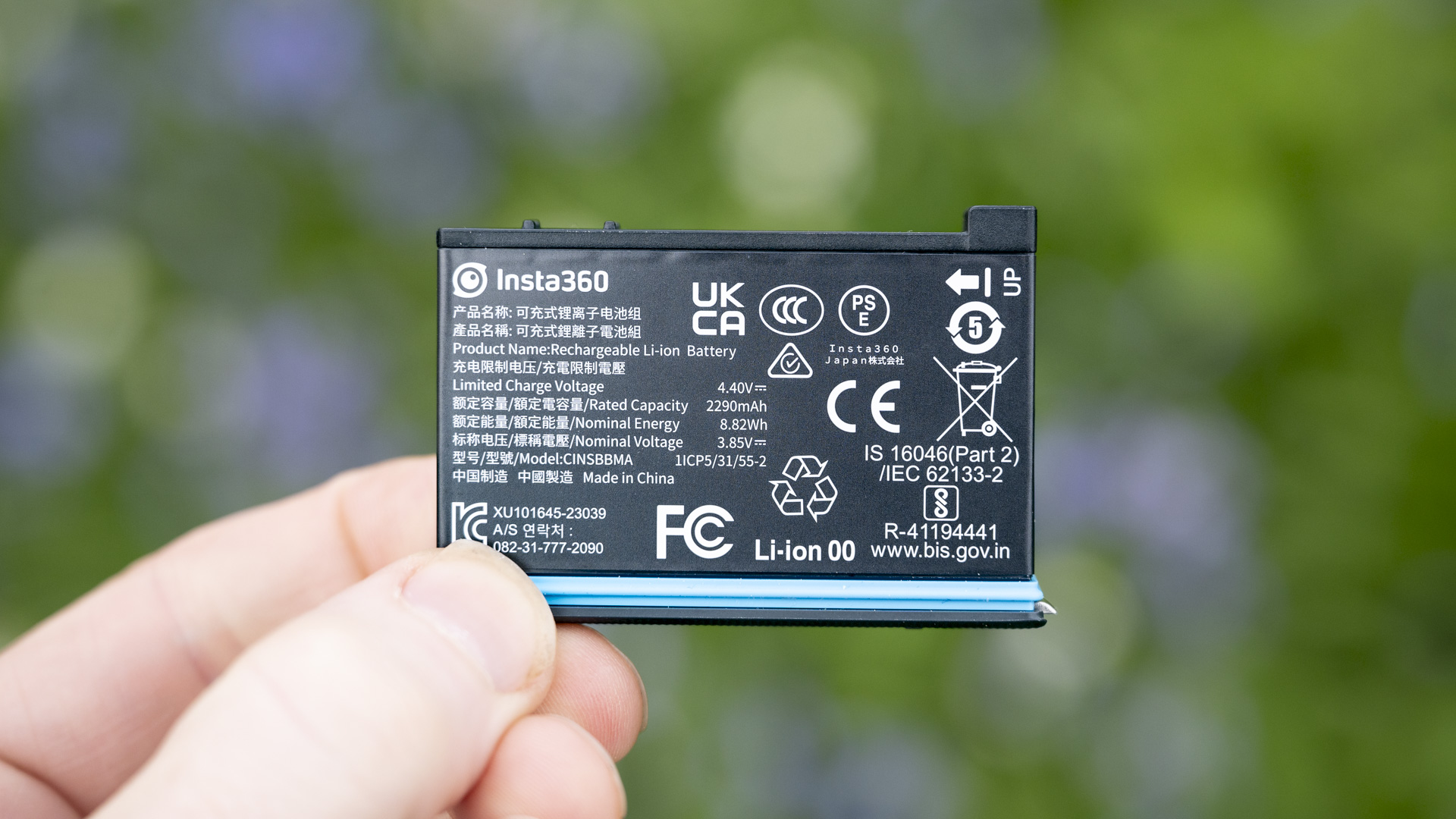
Stabilization used to be one of the classic action camera battlegrounds. It still is at the low-end, but discussing it in Insta360 cameras has now become quite boring. Its FlowState stabilization has been excellent for ages now, and continues to be so. The Insta360 X3 is great for sporty use, or extreme sports use, as long as you don’t mind the way its tall shape will stick up from the mount a bit.
The 360-degree view means there’s basically infinite scope for stabilization, and the Insta360 X3 has horizon leveling to make this effectively automatic. You can also switch on a feature called Direction Lock when editing your clips, which counters any twisting of the camera so it appears as though you were holding the X3 straight the whole time.
The Insta360 X3 has a built-in TimeShift mode, which is a form of Timelapse shooting designed to let you use the camera handheld. It doesn’t have the smarts of GoPro’s version, which can automatically shift the footage’s speed up and down based on whether there’s anything interesting going on in the scene. But it’s a quick way to make sped-up clips.
We do think you get better results by shooting at standard speed and turbo-charging footage in the edit, as Insta360 offers good-looking motion blur and better control over the speed of playback.
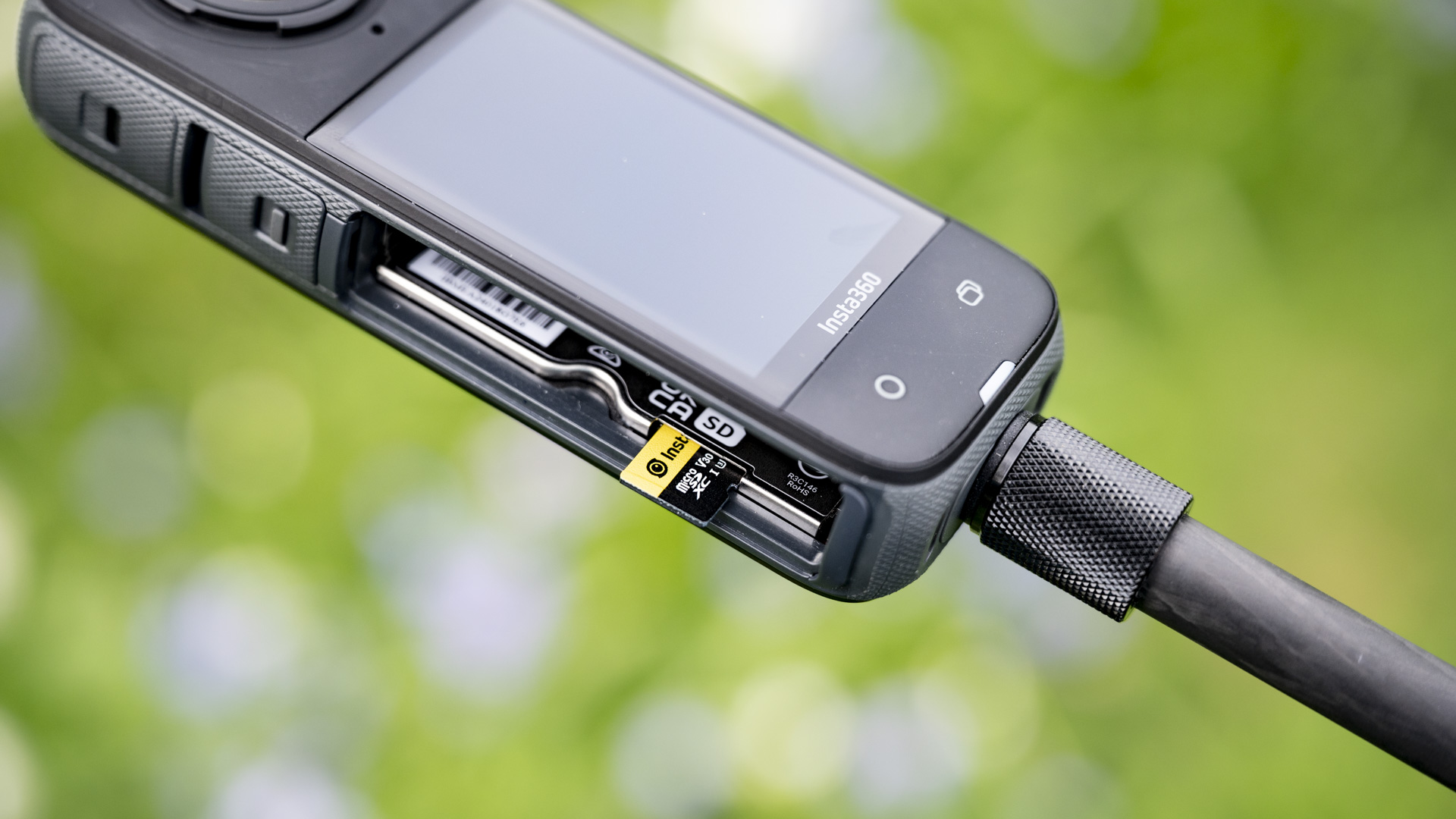
There are parts for Insta360 to address in a future camera or, fingers crossed, a software update. The Insta360 X3 takes a solid couple of seconds to actually start recording clips, and the GoPro Max feels instantaneous by comparison.
Like most Insta360 launches, we’ve also come across a few bugs. It has frozen on a few occasions, and one low-light mode clip was rendered unreadable for some reason. However, these mostly cropped up when handling footage after a shoot, not actually during capture.
The Insta360 X3 also has several interesting modes we’ve not discussed yet. Me Mode is one of the neatest. This leverages the slight overlap of the lenses’ vision to produce a flat clip in which a stick used to mount the camera becomes invisible. You’ll still see your arm holding it, of course, but it’s great for no-fuss dramatic shots. Insta360 uses someone jumping into the sea, and snowboarding, as a couple of examples.
You can capture stills at up to 72MP resolution, in the 360-degree mode. Again, this process is quite slow, but the results are solid — if not as impressive as those of a good phone when trying to capture a more ordinary field of view.
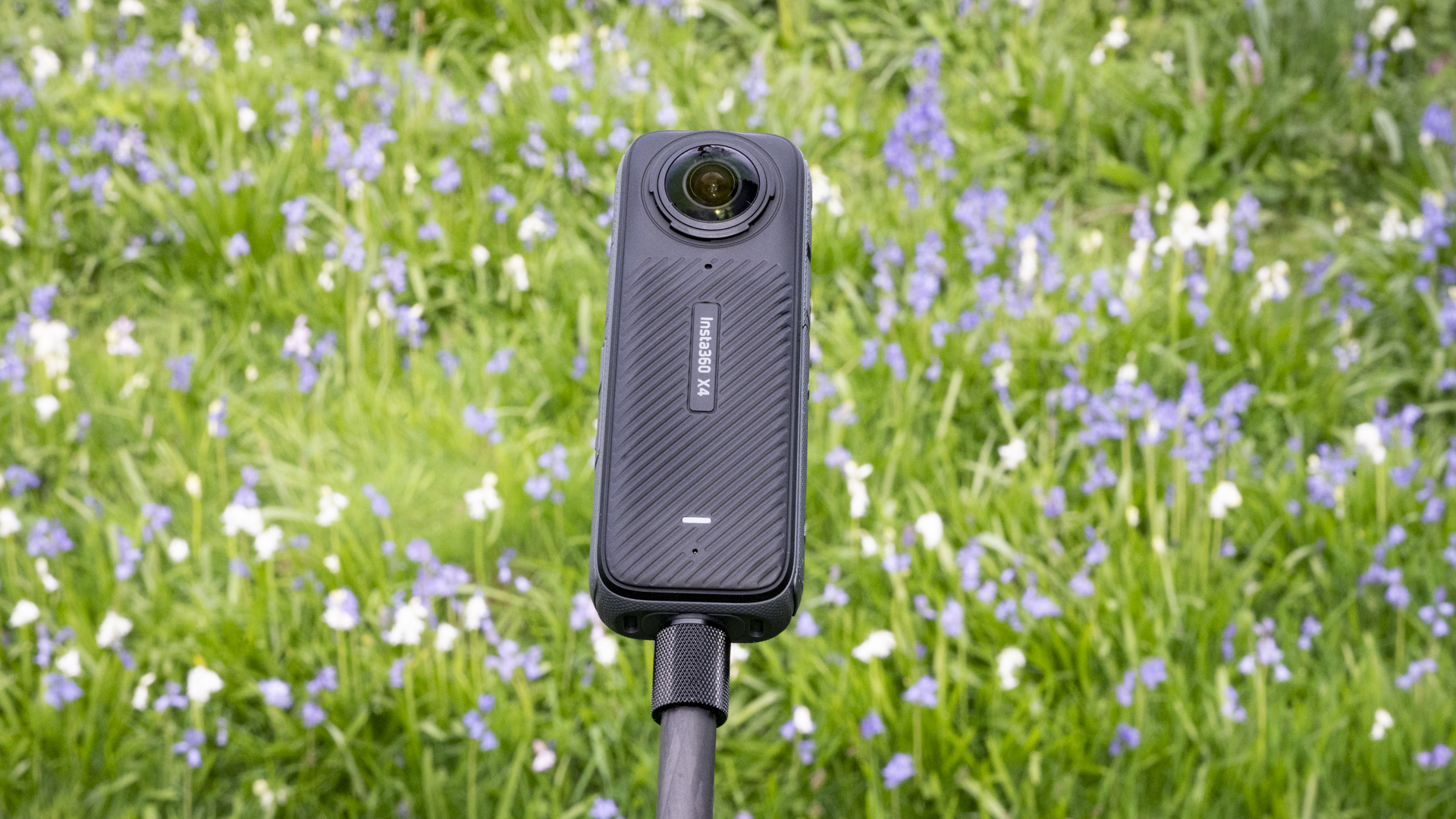
Insta360’s editing tools are fun and fairly easy to use as well. We tried both the phone app and Insta360 Studio on Mac for this review, and their tool sets are largely similar.
When re-framing 360-degree footage, you set key frames along the timeline, and Insta360’s software generates smooth transitions between them. You pinch and drag the view in the phone app to perfect each of these key frames, but rotational control is kept separate. This can initially seem a bit confusing, but does make key frame manipulation feel simpler than GoPro’s more free-wheeling approach.
We found the process fastest on a laptop, as mouse control just feels that bit more precise than on a phone-size touchscreen. 360-degree edited clips are set at 1080p when exporting from the phone app or Insta360 Studio, which may seem too limited when maximum res is 5.7K. However, we saw little obvious benefit after manually changing this to 4K resolution in the desktop Insta360 Studio software. And if you’re looking to produce remotely normal-looking videos, you’re not going to be using all of that raw 5.7K information anyway.
There’s also a plug-in for Adobe Premiere Pro, but we haven’t tried this as part of the review.
- Features and performance: 4.5/5
Insta360 X4: image and video quality
- Active HDR deals with blown out highlights
- Strong 360-degree image quality with limited cropping
- Single-lens videos look better than the GoPro Max
The Insta360 X3 has two 48-megapixel cameras with 1/2-inch sensors and f/1.9 aperture lenses. These are larger and higher-res than the 17MP, 1/2.3-inch sensors of the GoPro Max, and those of the One X2.
However, these numbers aren’t really aspects to focus on, beyond the one key mode they may help to enable. This is 4K video when shooting with a single lens, rather than in the 360 mode.
Single lens videos require zero editing – you can pull the resulting MP4 files straight off the camera, ready to go. Its sharpness is significantly better than the single lens mode of the GoPro Max, which is limited to 1080p. Sure, there’s a 1440p mode in the GoPro, but this is 4:3 capture, meaning it’s the same quality as 1080p, just with a taller frame.
So, are single lens videos a match for those in single lens cameras from GoPro and Insta360? Not even close. We only had the GoPro Hero 9 Black for direct comparison, but that older model has prettier color and much better detail at 4K, particularly out of the center of the frame. These flat videos become quite muggy and basic-looking at the corners of the shot, and look much more like 1080p captures than 4K.
This was always going to be the case. The Insta360 X3 lenses have to capture a full 180 degrees, the GoPro Hero 9 Black’s do not, and this mode crops into their view substantially. Don’t buy the X3 if 360-degree capture is a “nice to have” extra. 4K flat videos are also limited to 30fps, with 60fps available at a lower-quality 2.7K resolution.
360-degree video is the main event, and here the Insta360 X3 and GoPro Max find a form of parity. The X3 shoots 360 clips at up to 5.7K resolution, 30 frames per second. Insta360’s secret weapon is Active HDR, which you don’t get in GoPro cameras. This doesn’t affect the frame rate either.
Action cameras have a bad habit of leaving video clips with odd-looking gradients in skies as the frame errs closer to the sun. Or leaving very significant blown out areas in clouds on bright days. It’s because the small sensors of these cameras have relatively low dynamic range. The Insta360 X3’s HDR mode all but fixes this, at least compared to the standard shooting mode, by merging two exposures per frame.
Sometimes the results are quite brilliant, and give you loads more highlight detail to play with in the edit. It’s extremely useful when you’re shooting outdoors, or when there’s partial tree cover up top – one of the tricky parts of shooting 360 video is the exposure level is not just judged on what’s in front of you, but your entire surroundings.
You won’t want to use HDR 24/7, though. It’s no good for low light conditions, because it restricts the exposure time for each frame. And while it has real image quality benefits, I’ve noticed more aberrations in HDR clips, like very obvious noise in a plain blue sky towards the side of the frame — even on a sunny day.
HDR also has a color character that reminds us of the earlier 2013-2015 days of phone HDR, sometimes leading to unnatural-looking tonality and a slight flattening of contrast. However, this can be fixed in video editing software. Insta360’s own software offers a couple of color and clarity boosting options. I haven’t noticed any ghosting in Active HDR, though, which is the classic issue of HDR video where combined frames are shot sequentially, leading to “afterimage” doubling of moving subjects.
GoPro currently only offers tone mapping, which is nowhere near as powerful as “active” HDR. But when you get a bit more ambitious with your 360-degree editing, you can’t avoid the slight deficiencies of Insta360’s image processing.
Zoom in significantly and fine detail can become unconvincing. Tight textures like gravel, tree leaves and the patina of old walls get filled in with too many unnatural-looking straight and horizontal patterns. GoPro tends to avoid these, instead often looking softer, but more natural.
This is an effect of Insta360’s sharpening, which can be dramatically reduced by simply dropping it down from the standard “high” setting. But it’s a balance. If you want to edit down to a field of view less than 180 degrees, footage does become quite soft-looking with no sharpening at all.
Night shooting is, as in most other action cameras, quite poor. The larger sensors bring a slightly improvement over the Insta360 One X2, but not a dramatic one. However, there is a timelapse style night mode that dramatically improves results, called StarLapse. You’ll need to use a tripod for it, but it can be perfect for YouTuber-style B-roll footage.
Insta360 X4: Test scorecard
Should I buy the Insta360 X4?

Buy it if...
Don't buy it if...
Insta360 X4: Also consider

If our Insta360 X4 review has inspired you to think about other options, here are two more cameras to consider…
How we tested the Insta360 X4
- Sporadic use over a few weeks
- Bike rides and vlogging in various lighting conditions
- Bullet time, hyperlapse, and regular video recording using a variety of color profiles and resolutions
We had our hands on the Insta360 X4 for several weeks before its official launch. Sadly we've not used it for the kind of adrenaline-filled extreme sports that you see in the launch videos, although it's still had extensive real-world testing.
We run it in 8K capture for long periods to test its power and stamina, used it for vlogging on the move, and for moderate sports such as road biking. We've triued out the various video resolutions, color profiles and HDR video capture to see how the small 8K sensor copes in bright and low light.
The various video modes have been plyaed with too, including bullet time and hyperlapse, plus we've taken still photos in the various options.
First reviewed April 2024
0 comments:
Post a Comment